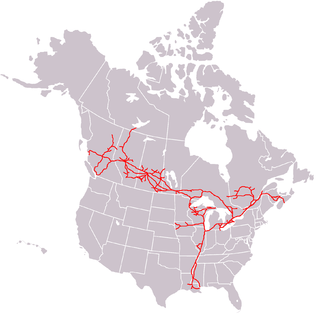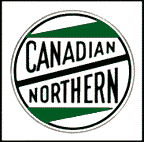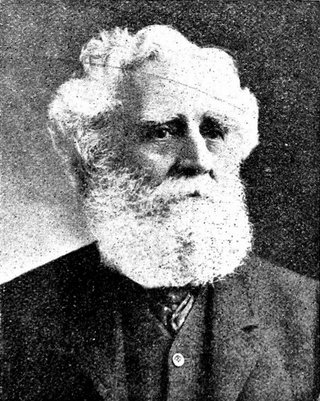Related Research Articles

The Canadian National Railway Company is a Canadian Class I freight railway headquartered in Montreal, Quebec, which serves Canada and the Midwestern and Southern United States.

Events from the year 1855 in Canada.

The Grand Trunk Railway was a railway system that operated in the Canadian provinces of Quebec and Ontario and in the American states of Connecticut, Maine, Michigan, Massachusetts, New Hampshire, and Vermont. The railway was operated from headquarters in Montreal, Quebec, with corporate headquarters in London, United Kingdom. It cost an estimated $160 million to build. The Grand Trunk, its subsidiaries, and the Canadian Government Railways were precursors of today's Canadian National Railway.

The Canadian Northern Railway (CNoR) was a historic Canadian transcontinental railway. At its 1923 merger into the Canadian National Railway, the CNoR owned a main line between Quebec City and Vancouver via Ottawa, Winnipeg, and Edmonton.
The National Transcontinental Railway (NTR) was a historic railway between Winnipeg and Moncton in Canada. Much of the line is now operated by the Canadian National Railway.

The Grand Trunk Western Railroad Company is an American subsidiary of the Canadian National Railway operating in Michigan, Illinois, Indiana, and Ohio. Since a corporate restructuring in 1971, the railroad has been under CN's subsidiary holding company, the Grand Trunk Corporation. Grand Trunk Western's routes are part of CN's Michigan Division. Its primary mainline between Chicago and Port Huron, Michigan serves as a connection between railroad interchanges in Chicago and rail lines in eastern Canada and the Northeastern United States. The railroad's extensive trackage in Detroit and across southern Michigan has made it an essential link for the automotive industry as a hauler of parts and automobiles from manufacturing plants.
The Central Vermont Railway was a railroad that operated in the U.S. states of Connecticut, Massachusetts, New Hampshire, New York, and Vermont, as well as the Canadian province of Quebec.

The St. Lawrence and Atlantic Railroad, known as St-Laurent et Atlantique Quebec in Canada, is a short-line railway operating between Portland, Maine, on the Atlantic Ocean, and Montreal, Quebec, on the St. Lawrence River. It crosses the Canada–US border at Norton, Vermont, and Stanhope, Quebec, and is owned by short-line operator Genesee & Wyoming.
The history of rail transport in Canada began in the early 19th century. The Canadian railway system saw several expansion "booms" throughout history, as well as a major change from broad to standard gauge which occurred in the 1870s. An initially disconnected system was gradually integrated with the American railway network, as Canadian and American railway companies built lines and bought smaller companies in each other's country. The Intercolonial Railway, a product of Canadian Confederation, was Canada's first major experiment in railway nationalization, and following Confederation, several transcontinental railways were built.

The International Railway of Maine was a historic railroad constructed by the Canadian Pacific Railway (CPR) between Lac-Mégantic, Quebec, and Mattawamkeag, Maine, closing a key gap in the railway's transcontinental main line to the port of Saint John, New Brunswick.

The Northern Railway of Canada was a railway in the province of Ontario, Canada. It was the first steam railway to enter service in what was then known as Upper Canada. It was eventually acquired by the Grand Trunk Railway, and is therefore a predecessor to the modern Canadian National Railway (CNR). Several sections of the line are still used by CNR and GO Transit.

Gare du Palais is a train and bus station in Quebec City, Quebec, Canada. Its name comes from its proximity to the Palace of the Intendant of New France. It is served by Via Rail, Canada's national passenger railway, and by the private coach company Orléans Express.
The Ottawa, Arnprior and Parry Sound Railway, or OA&PS, is a historic railway that operated in central and eastern Ontario, Canada from 1897 until 1959. It was, for a time, the busiest railway route in Canada, carrying both timber and wood products from today's Algonquin Provincial Park areas, as well as up to 40% of the grain traffic from the Canadian west from Depot Harbour at Parry Sound through to the St. Lawrence River valley.
The Canada Atlantic Railway Company (CAR) was a historic North American railway located in Ontario, southwestern Quebec and northern Vermont. It connected Georgian Bay on Lake Huron with the northern end of Lake Champlain via Ottawa. It was formed in 1897 through a merger of three separate railway companies that John Rudolphus Booth had either purchased or created, beginning in 1879. The CAR was owned by Booth for eight years after its formation until he sold it to the Grand Trunk Railway (GTR) in 1904.
Grand Trunk railway stations or Grand Trunk railroad stations may refer to former and active passenger rail stations built for the Grand Trunk Railway or its subsidiaries the Grand Trunk Western Railroad and the Grand Trunk Pacific Railway.

The Mountain Division is a railroad line that was once owned and operated by the Maine Central Railroad (MEC). It stretches from Portland, Maine on the Atlantic Ocean, through the Western Maine Mountains and White Mountains of New Hampshire, ending at St. Johnsbury, Vermont in the Northeast Kingdom. The line was abandoned in 1983 by MEC's successor, Guilford Transportation Industries (GTI). Guilford retained a stub between Portland and Westbrook. A section in New Hampshire remains in use by heritage railway Conway Scenic Railroad.

The Canadian province of Quebec formed the Quebec, Montreal, Ottawa and Occidental Railway (QMO&OR) in 1874 to link those cities since private companies, without the usual subsidies from the Federal Government of Canada, could not get financing, mainly because the Grand Trunk Railway was lobbying against it.

Joseph Hobson (1834–1917) was a Canadian land surveyor and railway design engineer. Early in his career he apprenticed under various professionals and became a provincial land surveyor when he was 21 years old. He did layout work for towns and counties in Ontario.
References
- ↑ Aqua train
- ↑ Belt Railway of Chicago, History Archived 2006-02-08 at the Wayback Machine . Retrieved January 31, 2006.